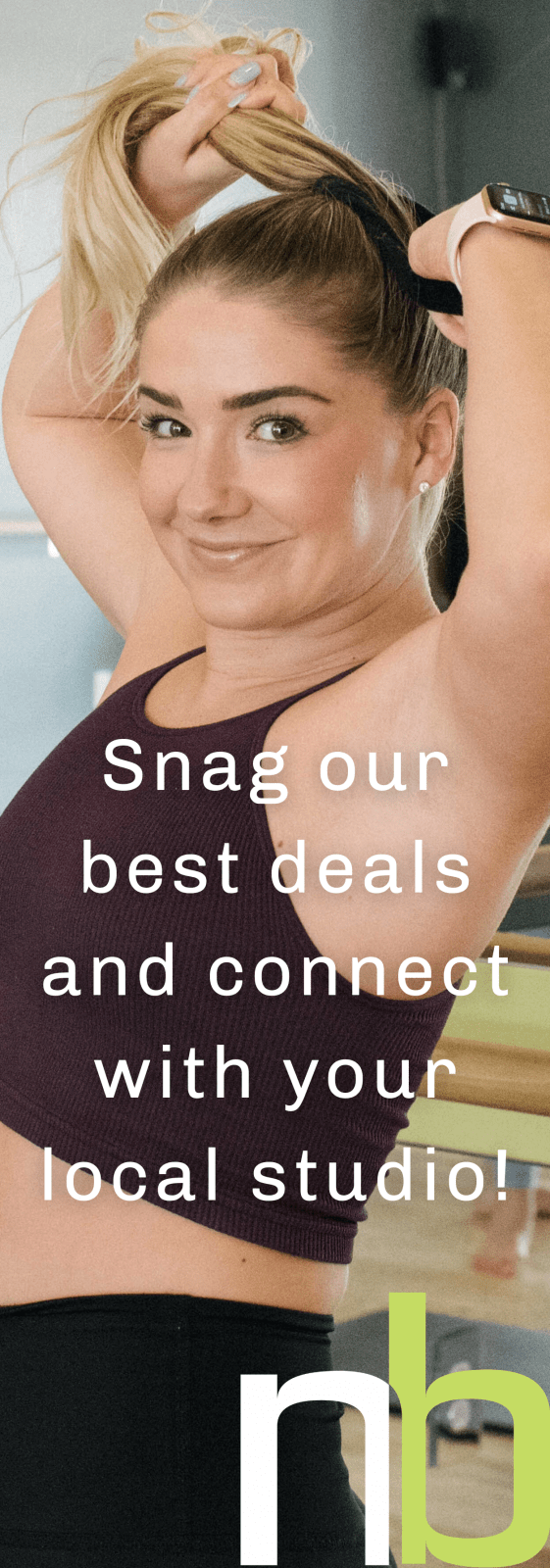Modify. It Doesn't Hurt To Take A Lower Option In Barre Class.
Hot shaky muscles are a staple in our Neighborhood Barre classes, but actual pain can be another issue going beyond the barre burn to another level. While we do offer modifications throughout the workout, some pain issues require you to rework a position entirely in order to avoid discomfort in class. Common issues relate to knees, lower back strain, and strain to the neck and shoulders. While most of these issues will dissipate over time – as you build strength in class – it is important to use modifications to avoid unnecessary strain on your body. Here we will outline and demonstrate our most common modification needs.
Plank – During plank you want to think about pulling your belly button to your spine, allowing your core to do the work, and keeping a straight line down your body. We often see swayed backs and distended necks like this: 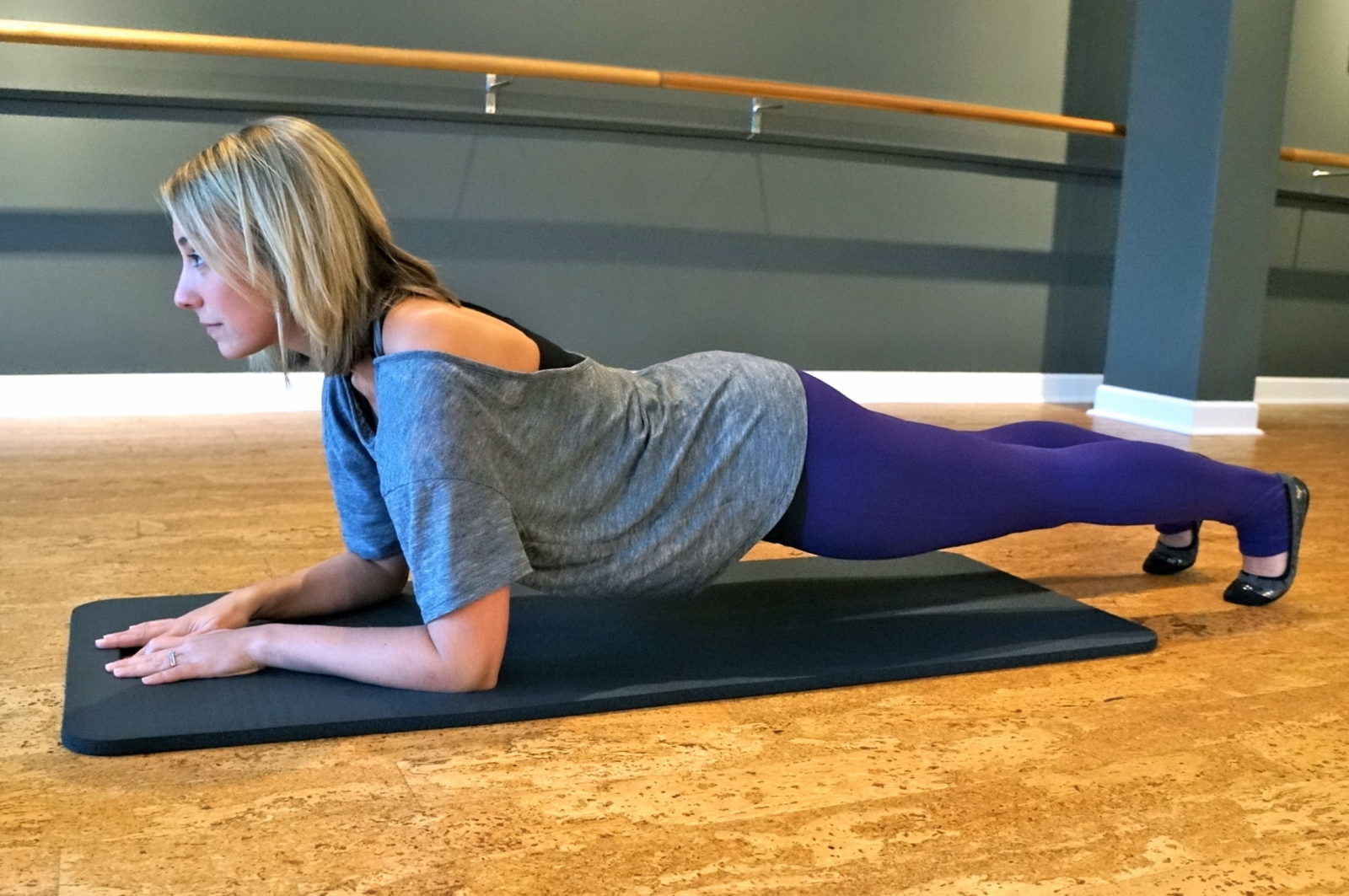
If you feel the sway, use this modification – drop to your knees and then pull your belly button back to your spine to shift the work into your core. If holding this position is still too much, then take little breaks by pressing back into Child’s Pose.
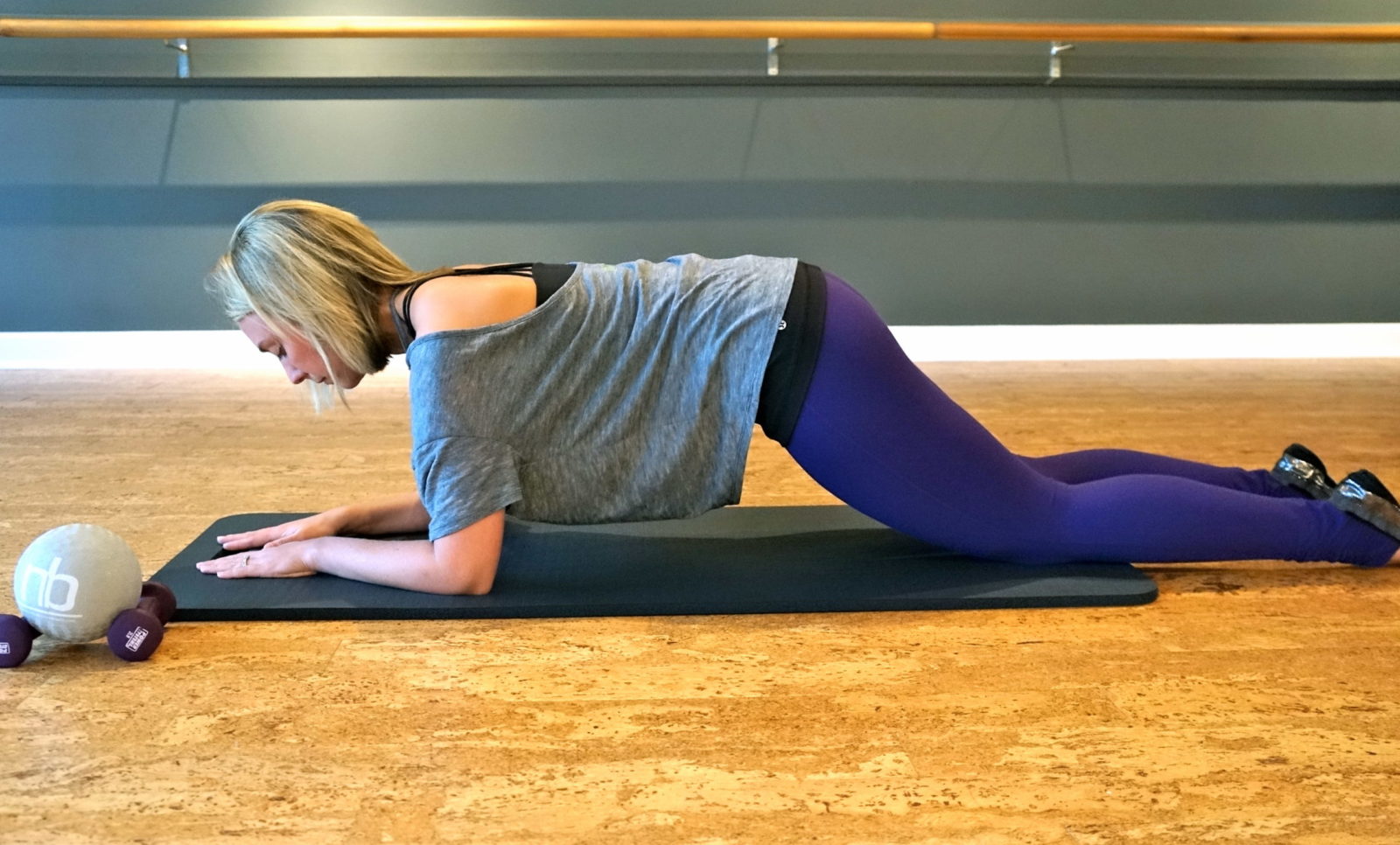
Diamond – 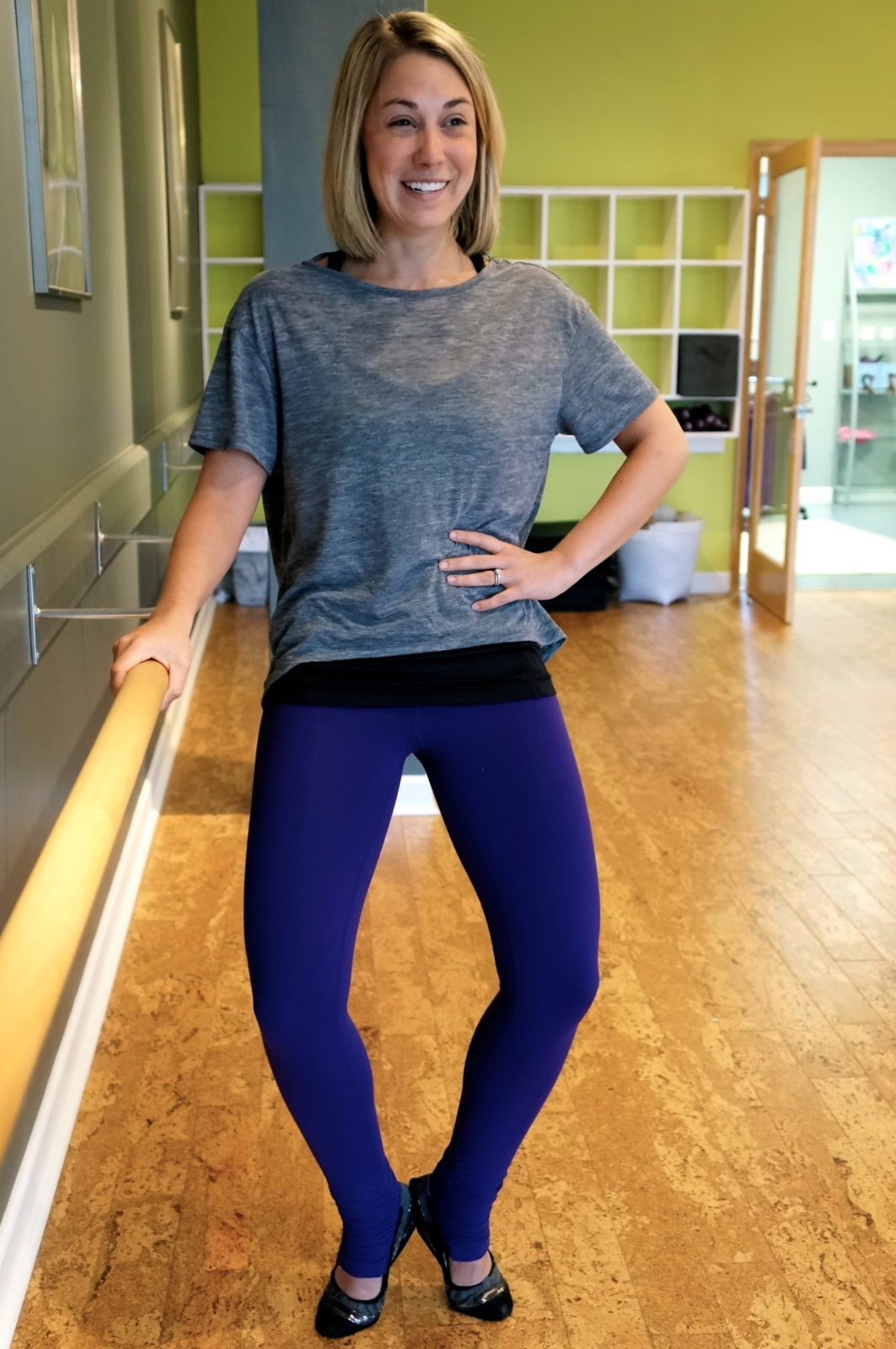 The most common complaint here is knee or hip pain. Often this type of pain can be caused by your knee to hip alignment, not anything you are actually doing in the pose. Here we demonstrate a typical diamond pose:
The most common complaint here is knee or hip pain. Often this type of pain can be caused by your knee to hip alignment, not anything you are actually doing in the pose. Here we demonstrate a typical diamond pose:
To readjust, move your feet into a more narrow V taking pressure off the knees and putting more work in your thighs. You can also eliminate the ‘knee press’ portion of the exercise, choosing to hold a still position instead.
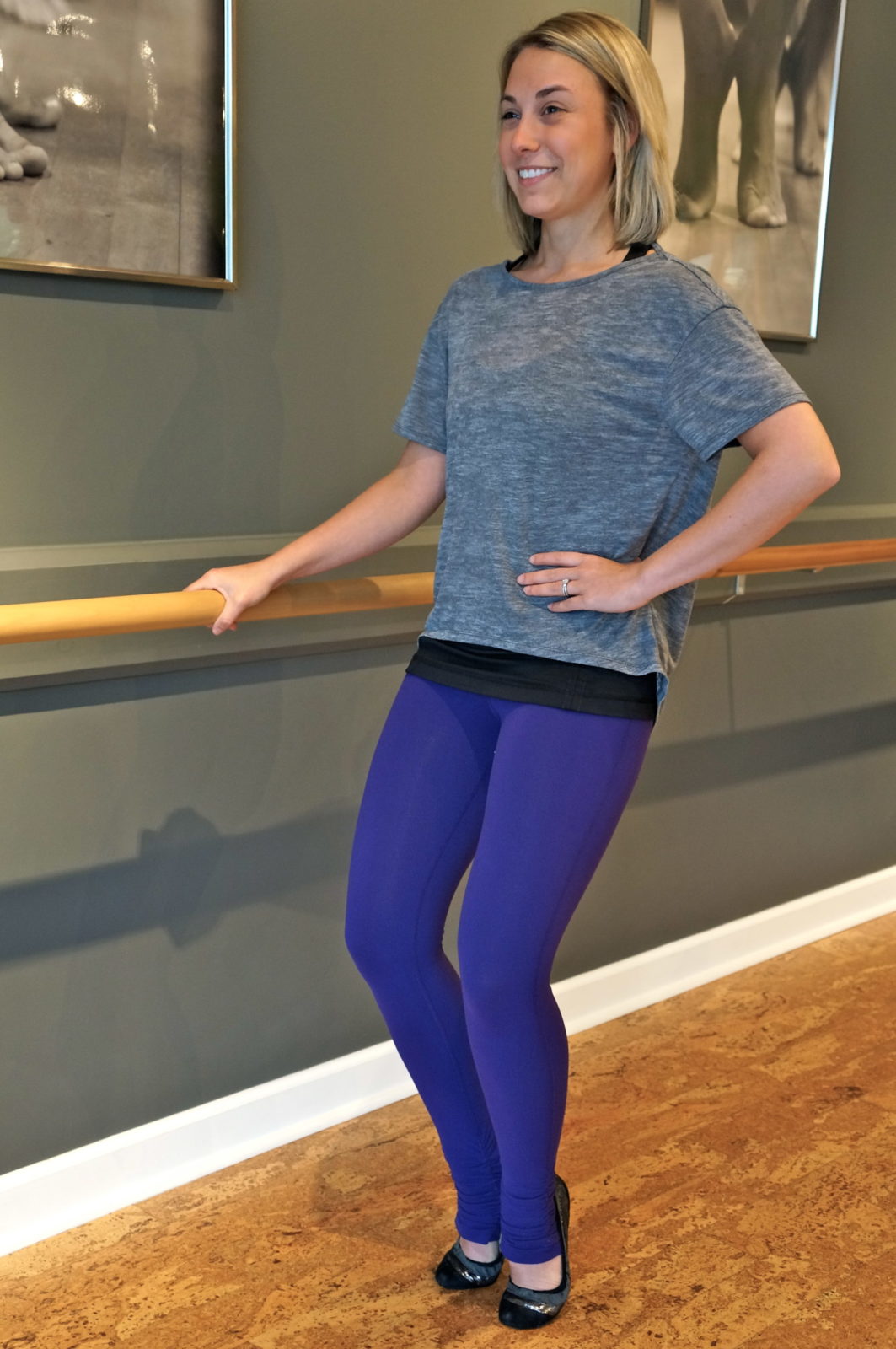
Chair – Lower back strain can be an issue in chair. Core strength and proper alignment play a big role here. Make sure that your shoulders are stacked over your hips, your hips are tucked under, and that your knees are stacked over your ankles. We often see swayed backs, hunched shoulders, or improper alignment as demonstrated below:
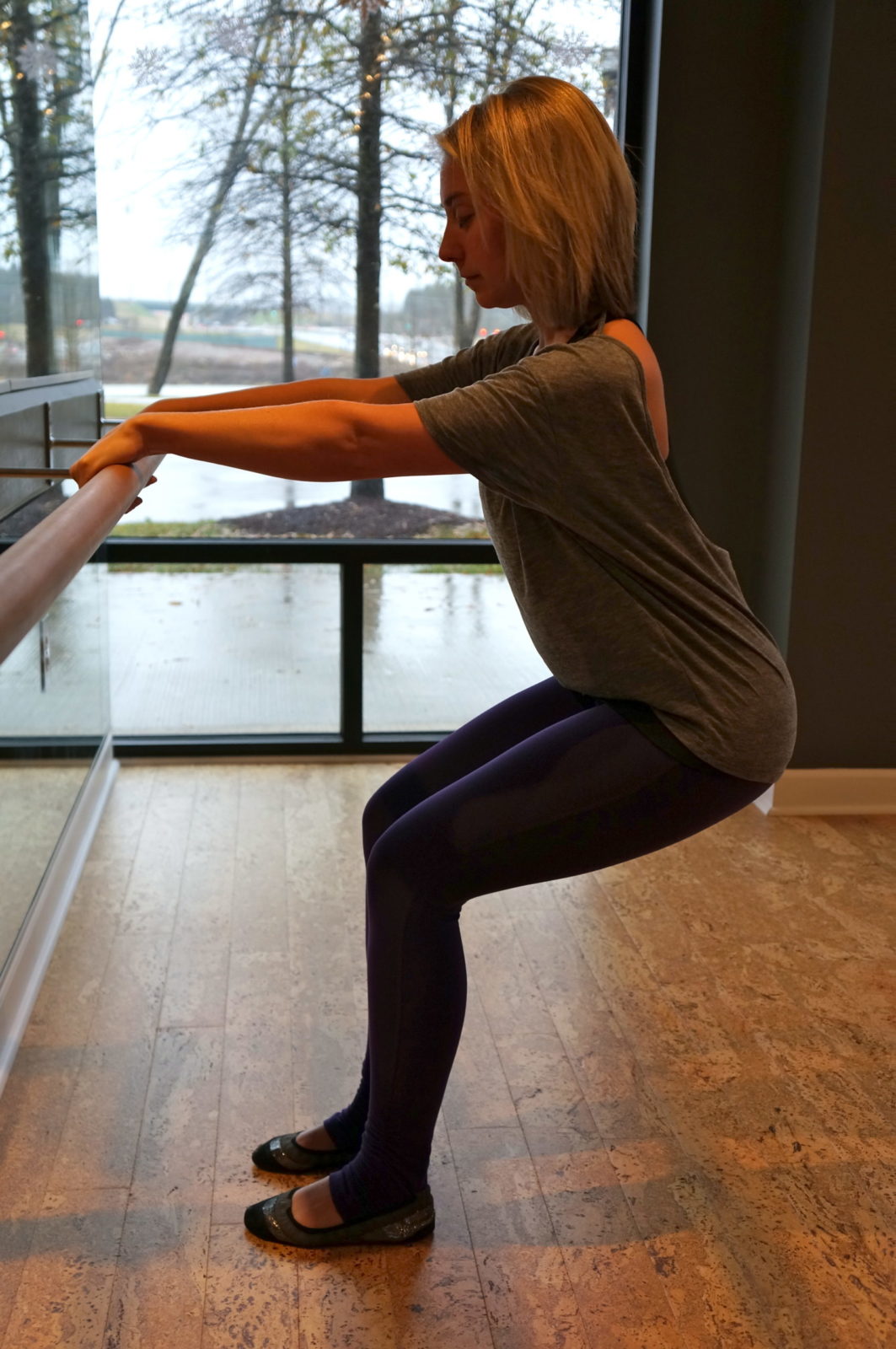
If you feel the back strain, walk your feet under the barre and use the baseboard for support. Pull your upper body closer and think about pressing your feet into the floor. This will properly align the body and put the work back into your thighs.
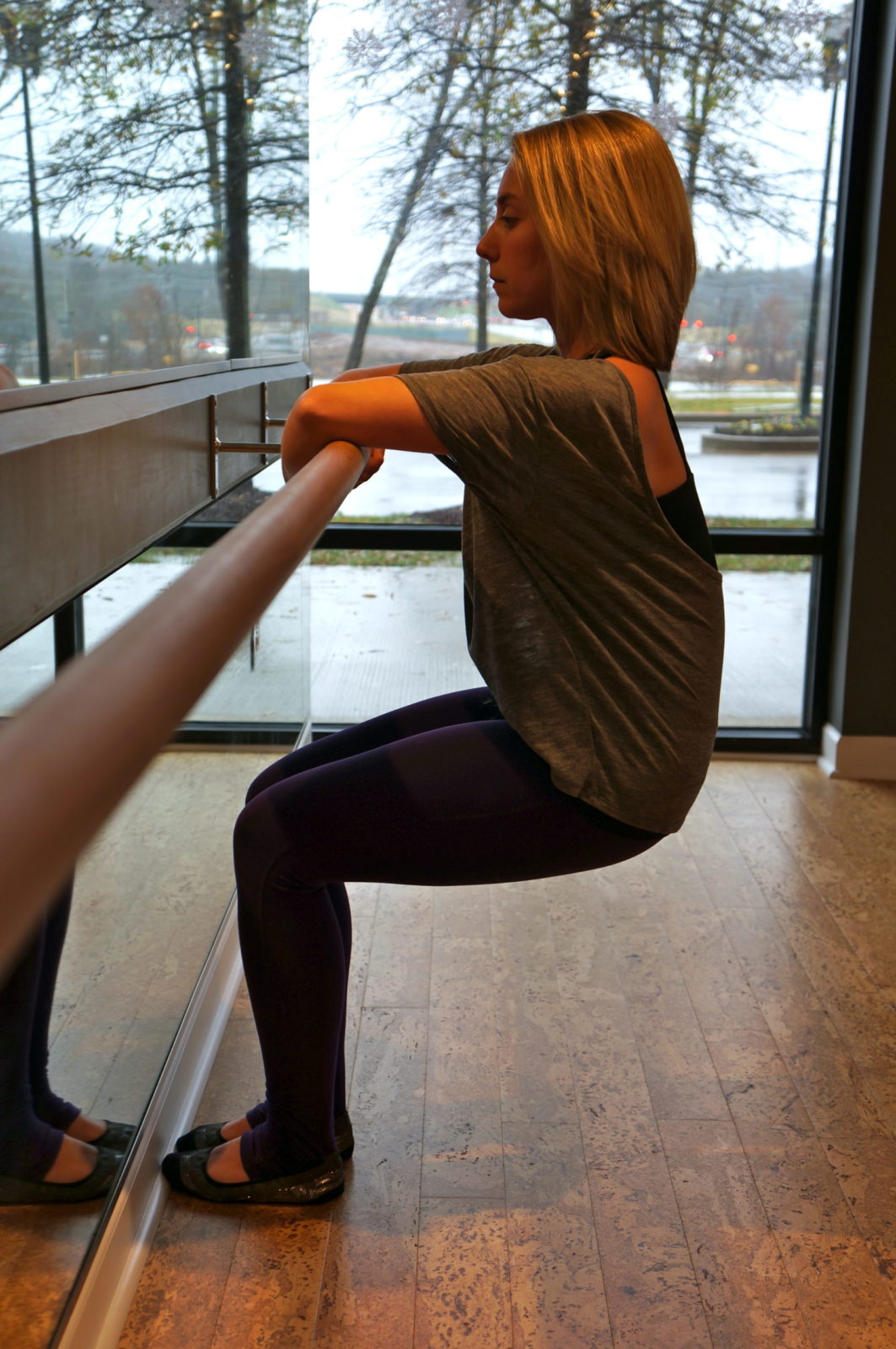
Ab Work – Neck and shoulder strain and lower back pain can often be associated with Pilates-style ab work. Luckily there are MANY modifications for abs, but here are a few basics that work in most positions to alleviate strain.
There is always an option to use 2 balls. This works great for a pre/post natal modification, or for anyone who has a sensitive lower back, by allowing support to the spine throughout the portion of abs where we work high.
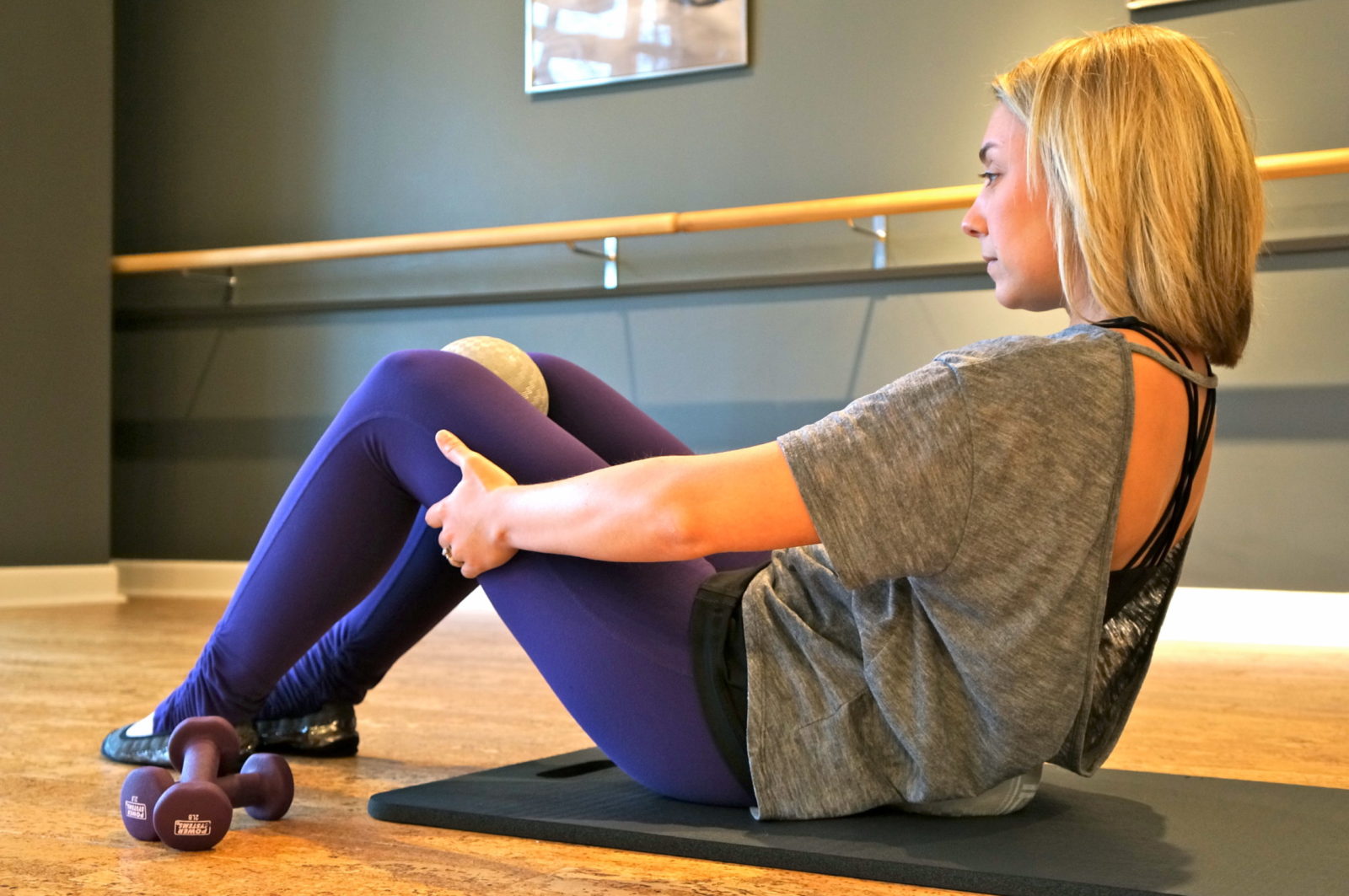
The twist – our favorite modification on our twisting oblique work is to keep the ‘floating leg’ bent, thereby pressing the foot into the floor. You will feel your lower back press into the mat. This will shift the work back to your core and allow you to relax your neck and shoulders, as this is often where we feel the strain in this exercise.
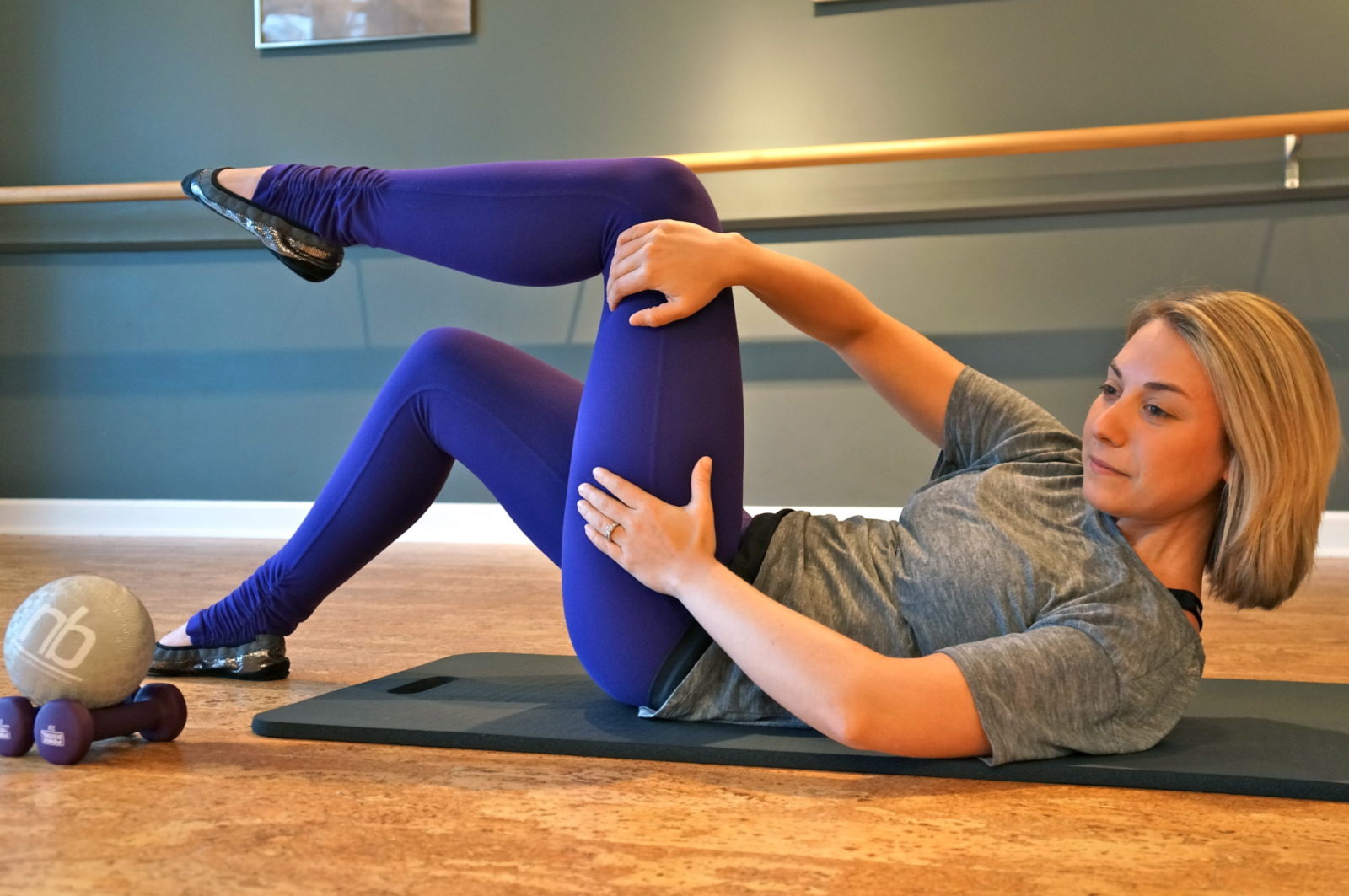
The pump is another exercise that can cause the shoulder and neck pain that we so often feel during Pilates. Rather than setting your head down, try lowering your feet from table-top to the ground. Like the previous example, this will allow you to reengage your core rather than straining through your neck.
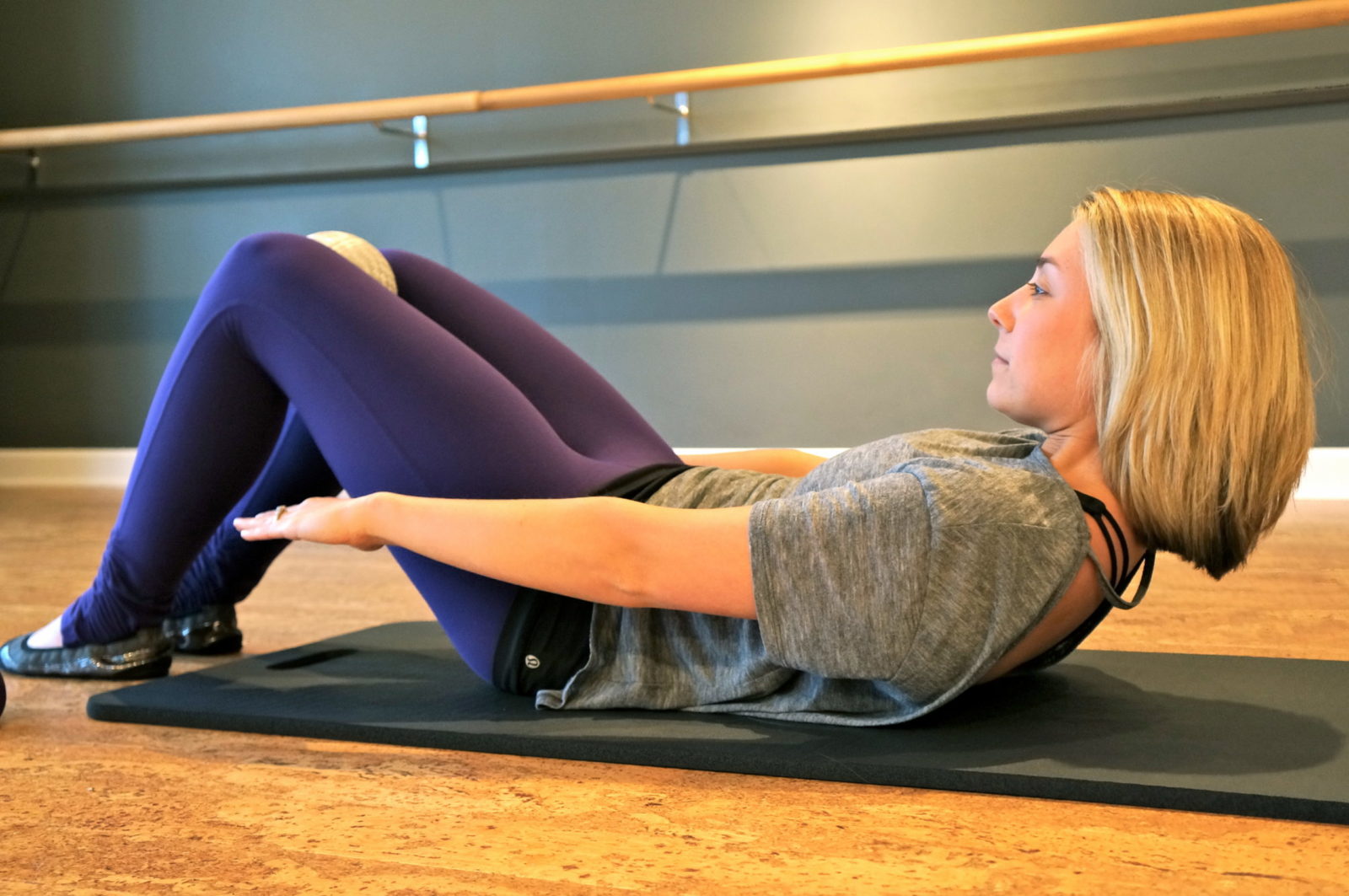
Keep in mind that a lot of the pain – especially lower back, neck, and shoulder strain – will subside as you get stronger, as we often compensate for lack of core strength with other muscle groups. ALWAYS take the lower options if you feel pain. It is better to have proper form while performing a more simple exercise, than to strain your body towards an advanced position. By listening to our bodies, we will know when the time is right to take it to the next level. Start slow. It is always OK to perform part of a set in an advanced position and then move to your modification. The more you push yourself, the longer you will be able to hold the advanced poses, using the modifications less and less!


